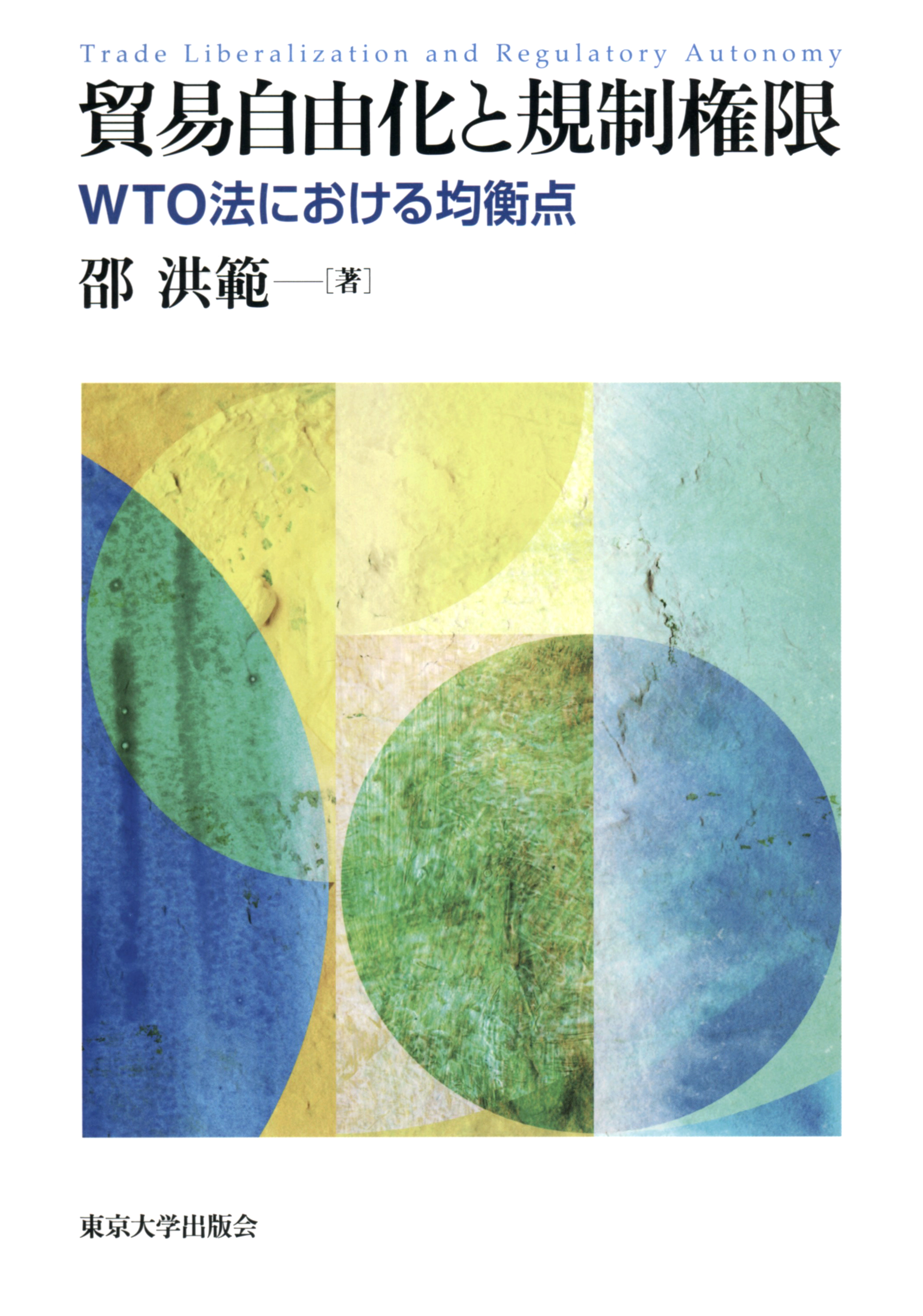
Title
Bouekijiyuka To Kiseikengen (Trade Liberalization and Regulatory Autonomy - The Balance Established in WTO Law)
Size
372 pages, A5 format
Language
Japanese
Released
April 19, 2019
ISBN
978-4-13-036152-1
Published by
University of Tokyo Press
Book Info
See Book Availability at Library
Japanese Page
The main objective of the World Trade Organization (WTO) is to promote and further trade liberalization, and WTO law specifies certain rules such as a non-discrimination principle, general prohibitions on import bans or quotas on goods, and other substantial obligations to achieve its objectives. Meanwhile, WTO Members design and adopt various domestic regulations to pursue societal interests or values in their domestic legal or political contexts. However, when domestic regulations designed and adopted by WTO Members have discriminatory or trade-restrictive effects, conflicts and adjustments between the regulatory autonomy of WTO Members and the WTO rules for trade liberalization become key issues.
This book understands these issues as needs to establish appropriate balance between the objective of trade liberalization on the one hand and WTO Members’ right to regulate on the other hand. It aims to analyze the way the WTO’s legal system has been responding to this crucial systemic issue and seeks to understand the current WTO jurisprudence regarding the scope of regulatory autonomy of WTO Members. Consequently, this book first focuses on the normative structure of the General Agreement on Tariffs and Trade (GATT), the Agreement on Technical Barriers to Trade (TBT Agreement), and the Agreement on the Application of Sanitary and Phytosanitary Measures (SPS Agreement). By examining the ways and the extents to which WTO panels and the Appellate Body (AB) have been interpreting those agreements in light of the idea of “balance” mentioned above, the book tries to elucidate the ways the regulatory autonomy of WTO Members has been addressed and secured under each agreement. Second, by focusing on the AB’s interpretative practice of purposeful cross-referencing between and among those agreements, the book argues that the AB’s interpretative practice has led to a jurisprudential convergence on the scope of the regulatory autonomy enjoyed by WTO Members under those agreements. Third, the book then considers the so-called “standard of review” that WTO panels and the AB apply in light of the WTO rules when they review the validity of certain actions or measures of WTO Members. It particularly discusses the ways in which WTO panels and the AB have articulated and applied the standard of review in the context of the WTO dispute settlement process, also emphasizing the importance of establishing the applicable standard of review. Finally, based on these approaches, this book then assesses the status of the established balance between the objective of trade liberalization and WTO Members’ right to regulate, and it offers some hints for ways to better establish that balance within the WTO’s legal framework.
The main subject matter of this book, namely, understanding the scope of domestic regulatory autonomy of WTO Members under the WTO law in light of the established balance between trade liberalization and the Members’ right to regulate, is mainly guided and addressed by analyzing a wide range of case law. The trends ascertained and derived from the case law analysis provide useful and important implications for assessing and understanding the current WTO jurisprudence regarding the scope of domestic regulatory autonomy of WTO Members. The book particularly notes and emphasizes the role of coherent and consistent interpretation of the GATT, the TBT Agreement, and the SPS Agreement as conducted by the AB. Most importantly, the analytical approach of the book provides a novel perspective which focuses on the dynamic interaction among the GATT, the TBT Agreement and the SPS Agreements through the principle of harmonized interpretation.
(Written by: So hongbum / November 09, 2020)




 eBook
eBook